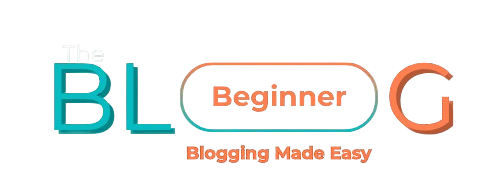Website Design Tips for Bloggers: Make Your Site Look Clean, Modern & Professional
Table of Contents
🧠 Introduction
Great content is essential…
But if your blog looks messy or outdated, many readers won’t stick around long enough to read it.
In 2025, users expect a blog that’s easy on the eyes, fast to load, and simple to navigate.
The good news? You don’t need to be a designer to achieve that.
In this guide, you’ll learn how to design your blog like a pro — with no code and no confusion.
🧩 Step 1: Start with a Clean, Lightweight Theme
Your theme is the foundation of your design.
💡 Recommended Free Themes:
- Blocksy – Fast, visual, and super customizable
- Astra – Minimal and highly compatible
- GeneratePress – Clean, performance-focused
- Kadence – Sleek and beginner-friendly
Avoid bloated themes with too many animations or heavy scripts.
✅ Rule: Speed + Simplicity = Better User Experience
🎨 Step 2: Stick to a Cohesive Color Palette
Choose:
- 1 Primary Color (for buttons, links)
- 1 Accent Color (for highlights or CTA areas)
- 1–2 Neutrals (background, text)
Use tools like Coolors or Color Hunt to build your palette.
💡 Tip: Make sure text has enough contrast (dark on light or light on dark).
✍️ Step 3: Use Clear Typography
Your fonts speak louder than you think.
What to Do:
- Use 1 font for headings and 1 for body text
- Stick to Google Fonts (fast + supported)
- Set a base size between 16–18px for readability
- Use clear line spacing (1.5–1.8 line height)
🔤 Fancy fonts may look pretty but kill usability.
📱 Step 4: Design Mobile-First
More than 60% of traffic comes from mobile.
If your blog doesn’t look good on phones, you’ll lose readers.
What to Check:
- Menu works smoothly
- Fonts resize correctly
- Buttons aren’t too small
- Images don’t overflow
- No annoying popups blocking content
Test using Chrome Dev Tools (Mobile View) or real devices.
📦 Step 5: Create Visual Hierarchy
Guide your readers with smart layout:
- Use clear H2 / H3 headings
- Bold or highlight key sentences
- Break up text with white space
- Add icons or checkmarks in lists
- Use dividers or boxes for CTAs
🧠 Make scanning easy — most readers skim first.
🖼️ Step 6: Use Consistent Featured Images
Your blog post thumbnails should follow a consistent size and style.
Best Practice:
- Size: 1200 × 630 px (works for social previews too)
- Format: WebP (small & fast)
- Style: Branded colors, clean text, optional icons
Use Canva templates to keep things uniform.
📚 Step 7: Organize Your Layout Smartly
Layout = how elements are arranged on your pages.
Homepage:
- Hero section (intro + CTA)
- Categories or featured content blocks
- Latest posts
- Email opt-in
Blog Post Page:
- Clear title
- Table of contents (for long posts)
- CTA at bottom
- Share buttons
- Author box
📌 Sidebar: Optional — keep it clean or hide on mobile.
🧼 Step 8: Eliminate Clutter
Design is as much about what you remove as what you add.
Remove or Avoid:
- Auto-playing music or videos
- Popups that cover everything
- Too many colors or fonts
- Overloaded sidebars
- Non-stop animations or moving sliders
Clean = trustworthy.
🔗 Internal Navigation
👉 Want to build your website? Start from Website Creation Guide
👉 Need plugin suggestions? Visit Best WordPress Plugins
👉 Creating content now? Read Content Creation Tips
💬 Final Words
Your blog’s design doesn’t need to be flashy — it needs to be functional, focused, and friendly.
When your readers land on your site, make sure they feel:
- Welcomed
- Guided
- Inspired to keep exploring
With a few smart tweaks, your blog can look like it was designed by a pro — even if you’re just starting 💙
